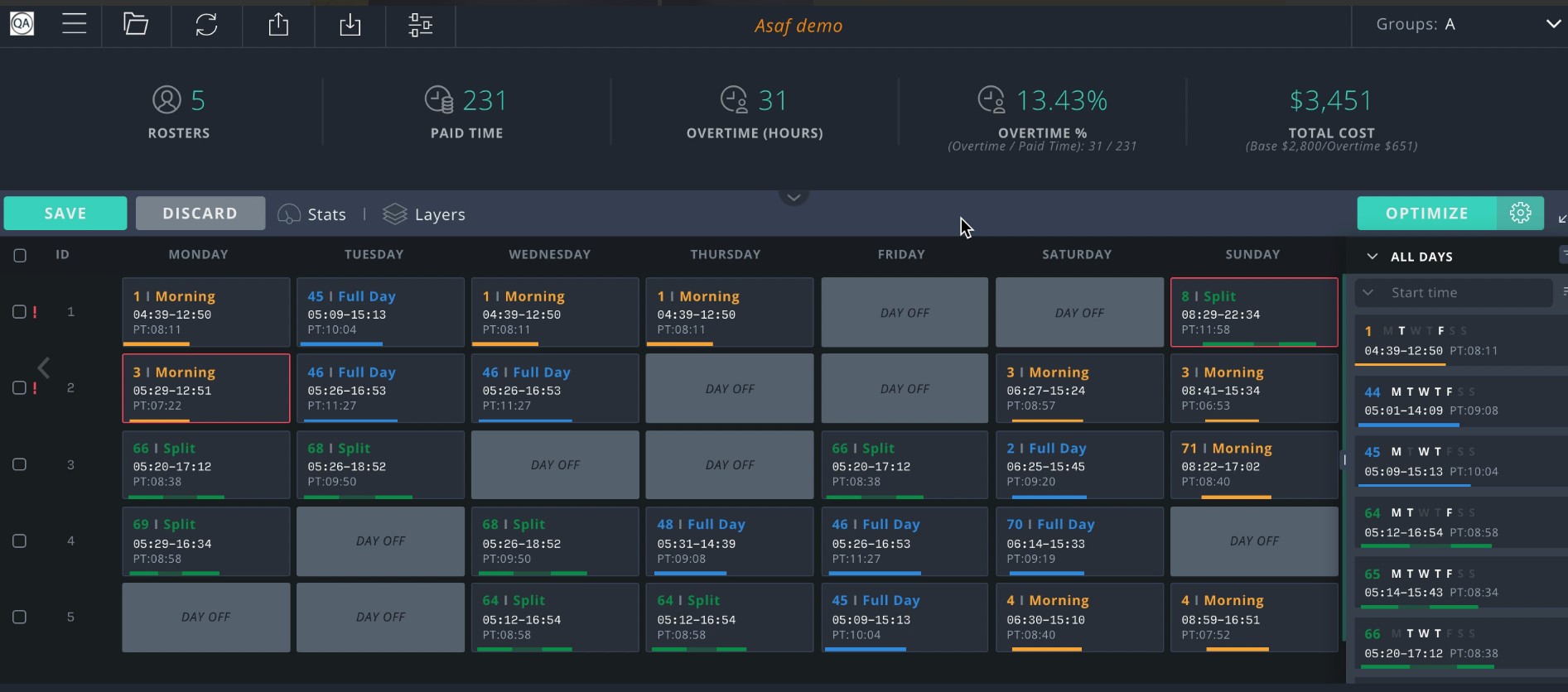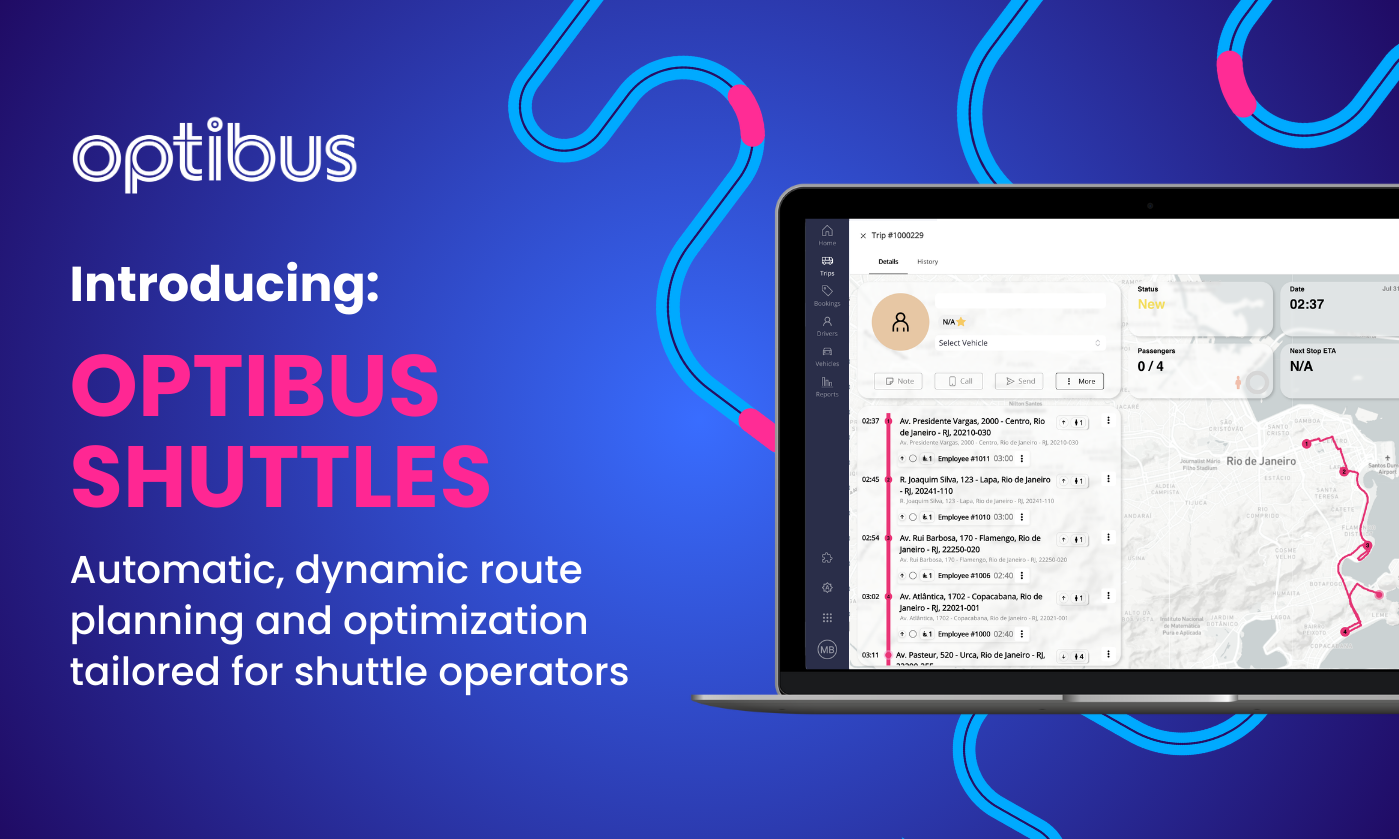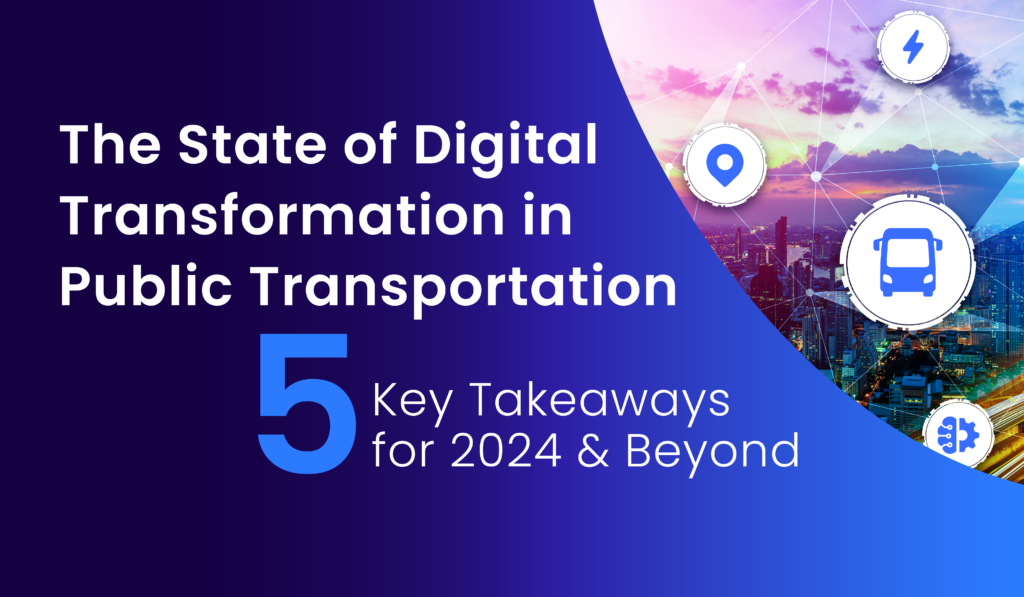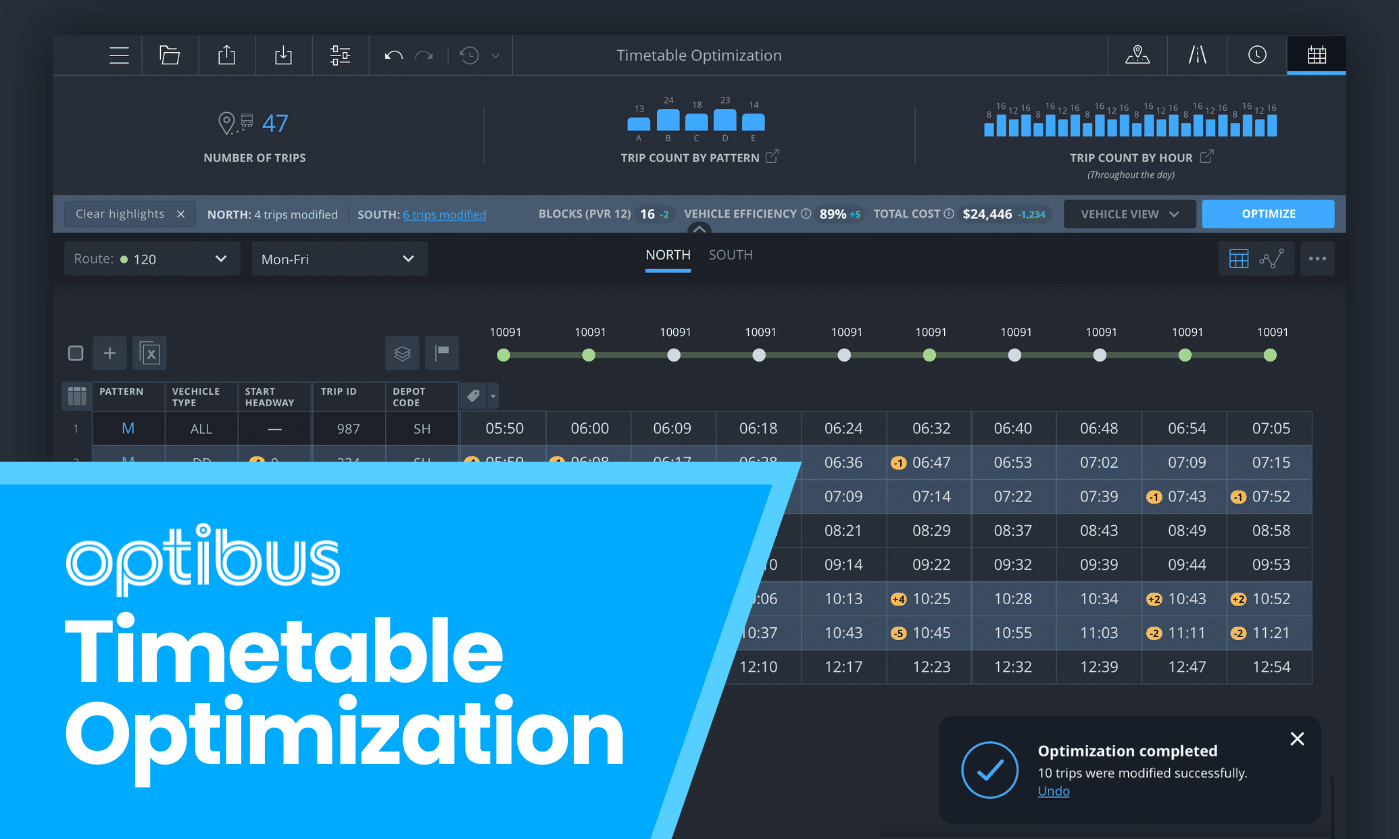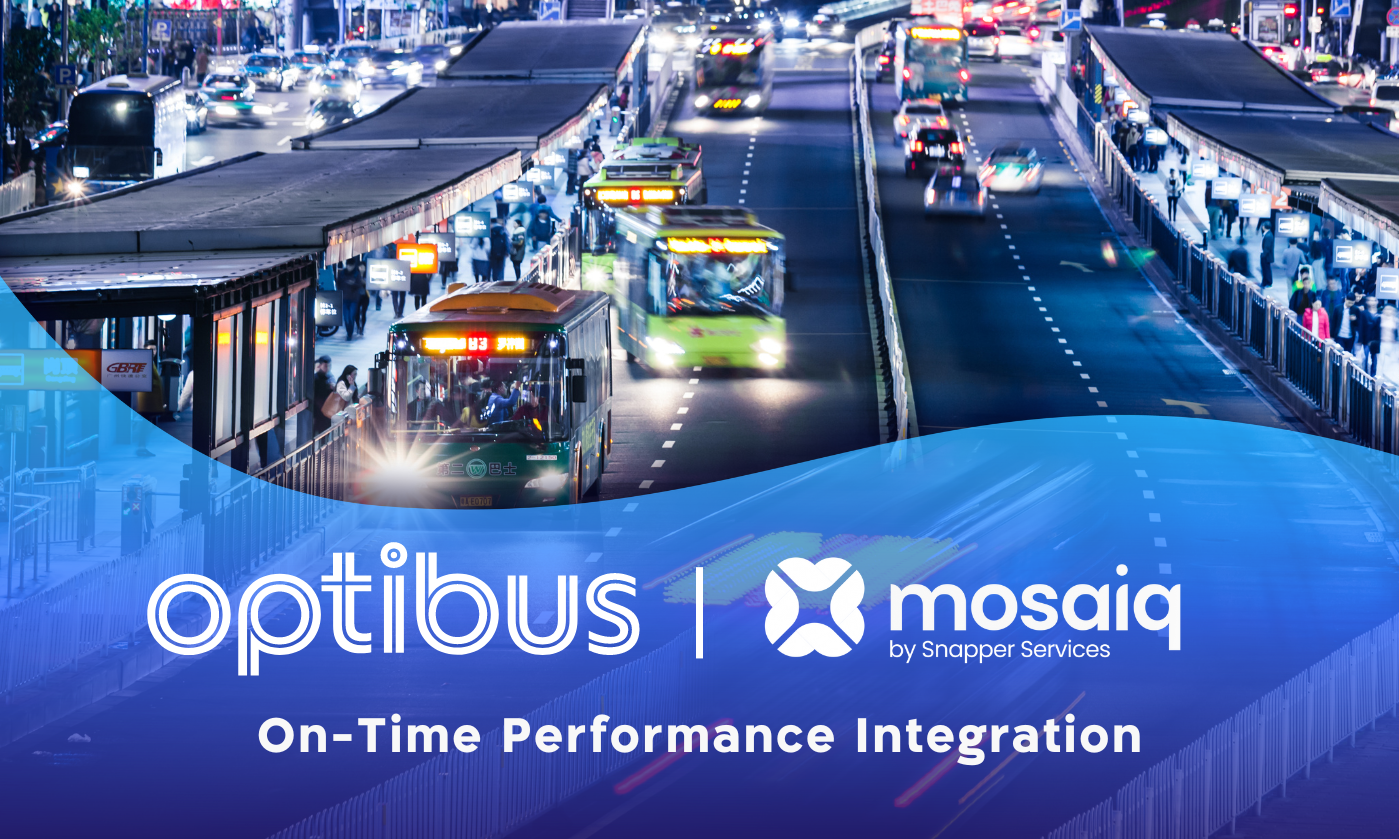Optibus, a leading software for public transportation planning and operations, proudly announces that a landmark one million optimizations have been performed using its platform. The milestone reflects the evolution of transportation planning and operations, shaped by the rise of artificial intelligence and optimizations algorithms, and coincides with Optibus’ launch of an AI-powered ‘Timetable Optimization in Scheduling’ feature for enhancing service efficiency.
Understanding Optimization Algorithms in Public Transportation
Optimization algorithms are sophisticated mathematical models designed to find the optimal solution to a problem within given constraints. In the context of public transportation, these algorithms analyze massive datasets to identify the best allocation of resources, such as vehicles, drivers, and EV chargers, in order to improve efficiency, reduce costs, and enhance service quality for passengers while maintaining compliance.
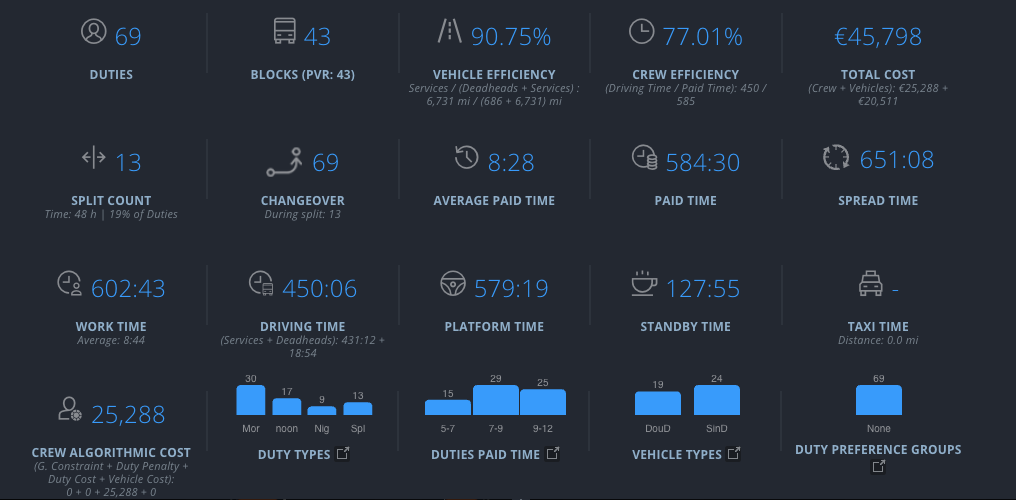
Optibus’ Key Performance Indicator (KPI) Dashboard (above) shows key metrics — like duty count, PVR, vehicle and crew efficiency, and total cost — all in one place. KPIs are automatically updated as operational changes are made through optimization, allowing users to measure the impact of every decision and compare scenarios.
Optibus' Suite of Optimization Offerings
Optimization algorithms are at the core of Optibus’ technology, providing the foundation for complex scheduling, planning, and operational problem solving:- Timetable Optimization: Minimizes costs, deadheads, and peak vehicle requirements (PVR) while ensuring that timetables stand up to real-world passenger demand and network requirements (headways, transfers, etc.).
- Vehicle Scheduling Optimization: Allocates vehicles efficiently to reduce deadheads.
- Crew Scheduling Optimization: Optimizes driver duties for service coverage, cost efficiency, and compliance over a single day or block of days.
- Relief Vehicle Optimization: Aligns usage of relief cars with regular service vehicles and driver duties.
- Roster Optimization: Assigns duties to an optimal weekly driver pattern that reduces costs while ensuring compliance and operational feasibility.
- Transfer Optimization: Minimizes missed connections by creating optimized transfer times for passengers.
- Demand Optimization: Matches vehicle types and frequencies to passenger demand while optimizing resource usage and speeding up timetable creation.
- On-Time Performance (OTP) Optimization: Optimizes runtimes and timetable accuracy based on historical and real-world data (i.e. traffic patterns) to improve OTP.
- Electric Vehicle (EV) Optimization: Discovers the optimal EV planning and scheduling scenarios and procurement counts to enable a cost-effective transition to eco-friendly fleets.
- EV Weekly Optimization: Detects opportunities over the course of the week to reduce unnecessary charging and save costs while ensuring sufficient battery for next-day services.
- Driver Allocation Optimization: Supports driver schedules over the long-term (weeks or months in advance)
- Allocation Optimization: Improves day-to-day planning, quickly creates compliant, cost-effective driver schedules, and supports real-time changes by assigning backup or extra drivers.
- Shuttle Route Optimization: Creates optimal routes based on passenger locations for work and school shuttle operations while reducing fuel waste.
These AI-driven optimizations are used across the full Optibus suite, from Network Planning and Strategic Planning to Operations.
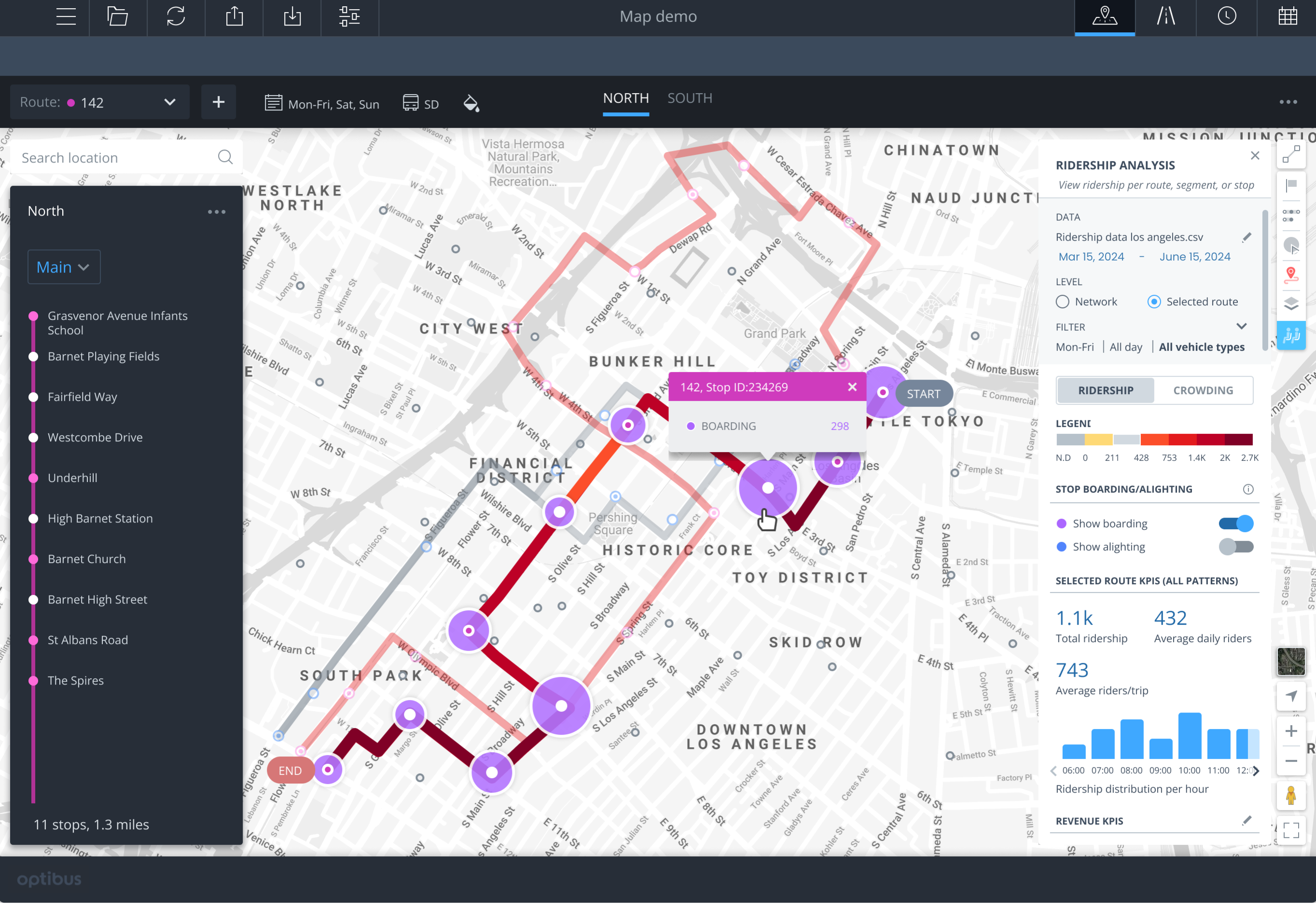
Demand Optimization: Part of Optibus Strategic Planning, this AI-backed optimization ensures resources are allocated efficiently to match passenger demand.
Insights from Optimization Usage
Analyzing one million optimizations from more than 2,250 Optibus users reveals key insights into the direction of the public transportation industry:
- Enhancing driver duties is today's top priority: In 2024, Crew Scheduling accounted for 53% of 14,432 average monthly optimizations.
- Long-term Focus: Over the last five years, crew scheduling and vehicle scheduling have been the two most commonly used optimization types.
- Seasonal fluctuations: In 2024, both crew scheduling and vehicle scheduling optimizations peaked from May - July before declining by about 33% at the end of the year (November - December). A spring-summer peak and end-of-year dip in optimization activity is noticeable for the past five years, reflcting seasonal needs (budget planning) or changes in operational demand (holiday and post-holiday slowdowns).
Real-world impact
Using Optibus’ optimization algorithms, operators and agencies have attained results including:
- €600,000+ in savings by optimizing vehicle usage and reducing driver duties by 5%
- Reduced PVR by almost 10%, from 340 vehicles to 307, for PTA-set timetables
- Eliminated 130,670 kilometers of annual deadhead mileage and reduced PVR by 14.75%
- 4% increase in operational efficiency
- 5% reduction in paid time and lower PVR, saving $130,000 USD
- Enhanced driver duties by accounting for driver preferences, relief vehicles, break rules, and more, without sacrificing operational efficiency
- Decreased overtime and idle hours
- Better service frequency
- Improved on-time performance to 97% and vehicle efficiency by 2%
- Better connections and shorter passenger wait times
- Faster scheduling and planning, from days to minutes
‘Timetable Optimization in Scheduling’ is the latest optimization feature to be added to the Optibus software platform.
A New Optimization Tool: Timetable Optimization in Scheduling
Expanding its optimization capabilities, Optibus’ Timetable Optimization (TTO) in Scheduling feature fine-tunes timetables at the scheduling stage to optimize the entire network — not just individual route routes — resulting in:
- Reductions in Peak Vehicle Requirements (PVR), deadheads, and expenditure.
- Cost-effective, efficient schedules for tenders.
- Single-step adjustment of multiple routes, ensuring efficiency while respecting schedule constraints and operational rules.
- Network-wide efficiency through start-time optimization.
This is a strategic tool for both PTAs that set timetables and PTOs that bid on tenders, where cost-efficiency and minimal PVR strengthens the proposal.
Learn more about TTO in Scheduling and request a demo here.
Further Reading:
- Webinar: Reduce Costs and Improve Efficiency with Timetable Optimization
- Webinar: Discover Optibus Shuttles: Dynamic Routing and Optimization in Action
- Case Study: Transportes Sul do Tejo achieves operational excellence using Optibus’ Timetable Optimization
About Optibus:
Optibus is a unified software platform for public transportation planning, scheduling, rostering, operations, and passenger information, powered by artificial intelligence (AI) and optimization algorithms. In thousands of cities worldwide, transportation agencies and operators use Optibus to maximize the positive impact of public transportation on passengers and the planet, improve operational efficiency and service quality, promote transportation equity, reduce emissions and costs, and modernize operations.

